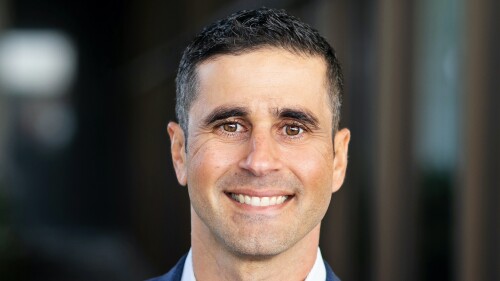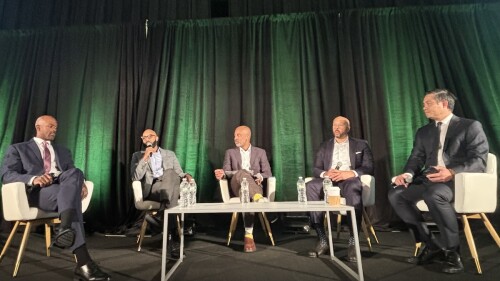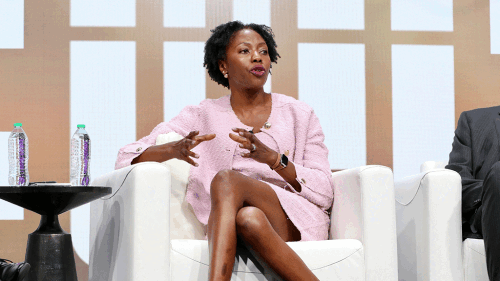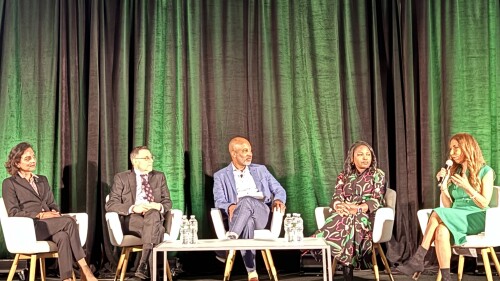Capital Markets and Finance
Under the leadership of Chief Investment Officer Wes Fuller, Greystar, a vertically integrated real estate firm that owns, operates, and develops multifamily, student, and senior housing, began investing in international markets in 2013, including in Europe, Asia, and South America. The company’s robust institutional investment management platform now has a global presence in 249 markets.
Despite headwinds, debt funds continue to fill the void in commercial real estate financing.
In the first quarter of the year, we saw a palatable increase in financing requests from a variety of sponsors providing some optimism that real estate activity may be picking up. And while very few could be categorized as “good news” transactions, the vast majority were clearly indicative of what we are seeing in the market.
This is the second installment of Urban Land’s coverage of a special three-part capital markets series held at ULI’s Spring Meeting in New York City (March 9-11; you can read coverage of Part 1 here).
It’s tough to view a strong economy as bad news. Yet a firmly positive economic projection in ULI’s Real Estate Economic Forecast does not bode well for commercial real estate participants who are hoping for relief in rate cuts from the U.S. Federal Reserve.
What does it take to secure debt in today’s challenging commercial real estate environment? It all boils down to experience, relationships, and a lot of creativity. That’s according to an expert panel speaking this morning at ULI’s spring meeting at the New York Hilton Midtown. The panel is the first in a series of three, which will include Raising Equity (10 a.m. Wednesday) and Borrowers’ Experiences—Recent Success Stories (10 a.m. Thursday).
Since assuming office in 2018, Assessor Fritz Kaegi has overseen the assessment of all residential and commercial properties in Cook County, the region in northeastern Illinois that includes Chicago.
Real estate economists’ outlook on the U.S. economy has improved over the past six months as economic data remain strong, and the long-predicted economic slowdown has failed to materialize. Responses to the latest semi-annual ULI Real Estate Economic Forecast survey, increasingly suggest a soft landing for the economy. In contrast, real estate market projections have declined as high-interest rates are expected to continue putting downward pressure on valuations and drag on performance in the near term.
Demand for industrial space has pushed vacancies to historically low levels. But the high tide may no longer be lifting all boats. A surge in new supply along with a growing appetite for more modern facilities is putting more pressure on the sector’s aging building stock. Legacy buildings are having a tougher time keeping up with the changing demands of today’s space users.
Potential trouble brewing in a sector that has been viewed as relatively bulletproof multifamily sector is concerning. But while stress is very much real, industry participants are quick to point out that the overall foundation for multifamily remains strong. “The cracks that we’re seeing are not structural; they’re superficial,” says Vincent DiSalvo, chief investment officer at Kingbird Investment Management, a family office investment firm specializing in multifamily.


![Western Plaza Improvements [1].jpg](https://cdn-ul.uli.org/dims4/default/15205ec/2147483647/strip/true/crop/1919x1078+0+0/resize/500x281!/quality/90/?url=https%3A%2F%2Fk2-prod-uli.s3.us-east-1.amazonaws.com%2Fbrightspot%2Fb4%2Ffa%2F5da7da1e442091ea01b5d8724354%2Fwestern-plaza-improvements-1.jpg)




![KAEGI_0072_pp (005)[1].jpg](https://cdn-ul.uli.org/dims4/default/e92c47f/2147483647/strip/true/crop/2400x1349+0+564/resize/500x281!/quality/90/?url=https%3A%2F%2Fk2-prod-uli.s3.us-east-1.amazonaws.com%2Fbrightspot%2F80%2Fa7%2Fc10772a049429983d4b20358d4b1%2Fkaegi-0072-pp-0051.jpg)

